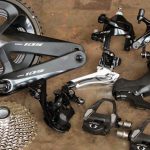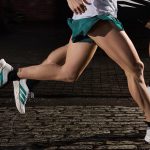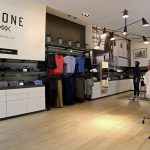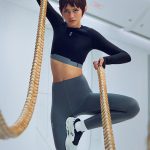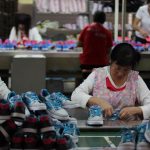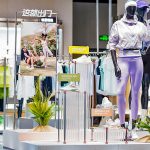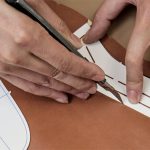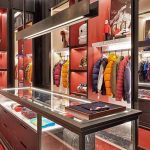The biggest impact on the sports lifestyle retail market during the fiscal first quarter was the lack of energy at the mall, which turned overall retail results downward for the period, especially on the bottom line. This softness resulted largely from retailers forced to mark down and discount product in an attempt to rein in inventories that failed to sell during a quarter filled with unusual weather patterns and calendar shifts. As a whole, the retailers tracked by Sports Executive Weekly (see chart page 3) saw sales increase in the mid-singles, but a decrease in margins, caused largely by the promotional environment, led to a high-20s decrease in profits. The resulting return on sales declined 100 basis points to 2.2%. Looking ahead, high-single-digit growth in inventories at the end of the period may be a precursor to an even more promotional second quarter.
Acquisitions had little impact on the overall numbers. The Dicks Sporting Goods acquisition of Golf Galaxy, the Zumiez deal for the Fast Forward chain, Oakleys addition of Oliver Peoples and the Optical Shop of Aspen, and Collegiate Pacifics tuck-in acquisitions could not move sales or profit by more than a full percentage point. The big changes from acquisition activity are all in the pipeline as The Finish Line looks to close its merger with Genesco, Payless expects to close its deal with Stride Rite, and Luxottica anticipates domination of specialty eyewear retail by adding Oakley to its mix. All three of the deals are expected to close in the second half.
With its IPO on the horizon, Lululemon filed quarterly results for Q1 with the SEC and is now included in the results. The companys effect on the overall retail market is relatively small, with sales growth remaining in the mid-singles and net income still in the high-20s. However, the effect is much more pronounced when looking at the Specialty segment on its own, where only LULU, Zumiez and The Buckle managed to see positive growth in the bottom line. Sales without LULU grew only 1.7%, while profits decreased just under 75% for the first quarter. Obviously, the largest force at Specialty was Foot Locker, Inc., but the softness at the worlds-largest-athletic-footwear-retailer was compounded by the competing promotional business at The Finish Line and Pacific Sunwear, where management said 520 basis points of the companys margin decrease was due to markdowns.
However, the picture is quite different when removing the Specialty channel from the numbers. Looking at just the Sporting Goods, Internet/Catalog and Family Footwear retailers, sales grew just over 10%, margins increased over 50 basis points, and income jumped in the high-20s.
In Sporting Goods, the story is all about Dicks Sporting Goods, where a high-20s sales jump netted bottom-line growth of just over 90%, due to a larger percentage of sales coming from private label product as well as distribution efficiencies. The growth at DKS was more than enough to offset net income decreases at Cabelas, Hibbett and Sport Chalet.
Internet/Team/Catalog retail now consists of GSI Commerce and Collegiate Pacific, which will be Sport Supply Group in the next edition of this review, as both retailers have succeeded in largely removing any competition in their respective markets, either through acquisitions for BOO or through partnerships with the largest retail names in the industry for GSIC. Signs are promising for this retail channel as sales were well up and the quarterly loss was nearly converted to a profit.
Family Footwear retailers dominated the ROS metric with net income growth well outpacing sales on strong results from Famous Footwear and DSW. These retailers likely benefited from the sport style and fashion casual trend that left many of the mall-based footwear retailers reeling.
Whether missed product opportunities, unusual weather patterns or diminished expendable income amongst consumers, footwear in the mall dragged down the results for sporting goods retail as a whole in the first quarter. Hopefully the markdowns that began earlier than usual this year in Q1 were enough to set up the second quarter for year-over-year improvements, but only the numbers can confirm that hope.



